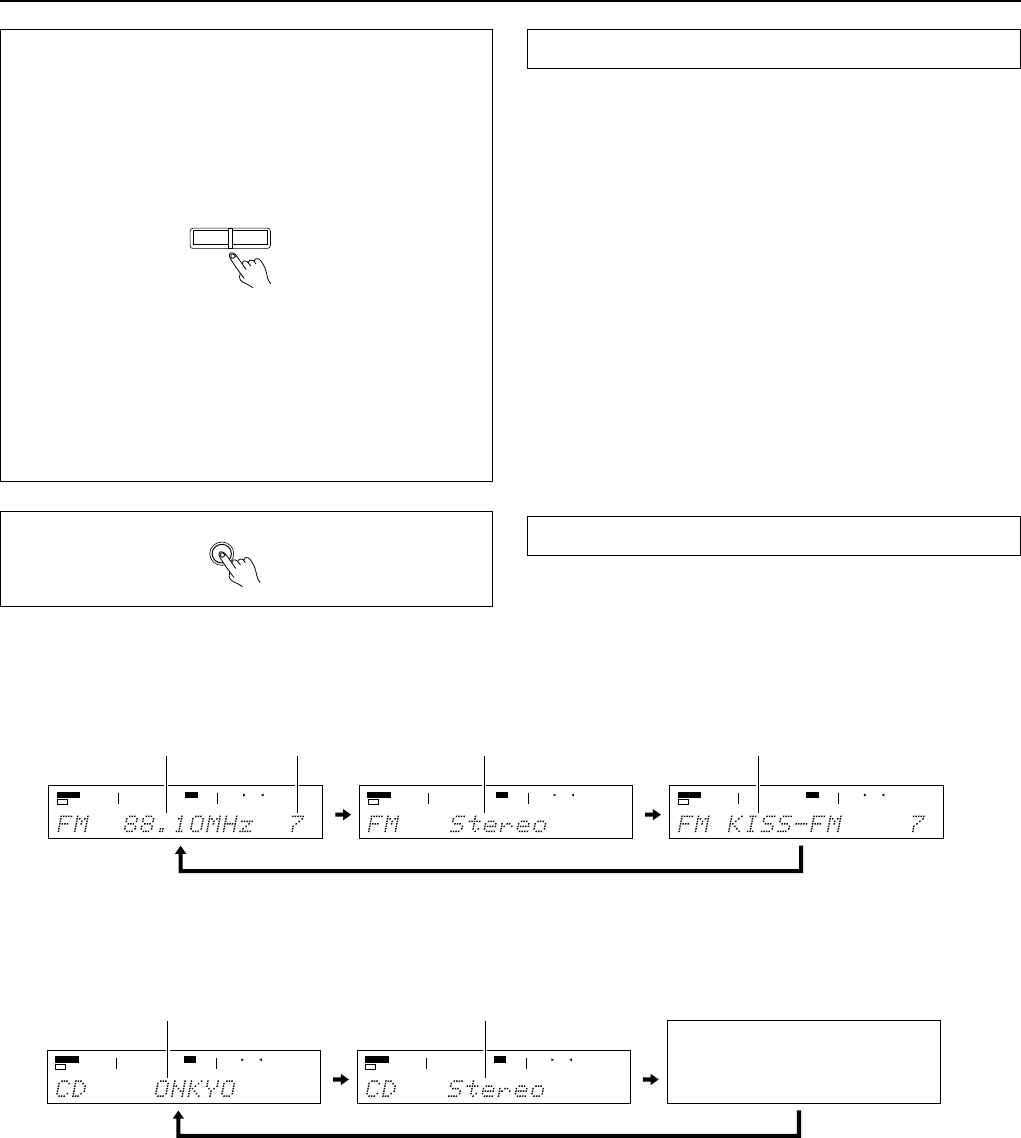
30
Selecting an input source
Selecting the speaker system
The DTR-7/DTR-6 can connect to two speaker systems. You can
switch between the two speaker systems by using the SPEAKERS A
and B buttons.
Selecting Speaker system A (SPEAKERS A indicator appears.)
Press the SPEAKERS A button to turn on or off the speakers con-
nected to the FRONT SPEAKERS A, CENTER SPEAKER and
SURROUND SPEAKERS terminals.
Selecting Speaker system B (SPEAKERS B indicator appears)
Press the SPEAKERS B button to turn on or off the speakers con-
nected to the FRONT SPEAKERS B terminals.
Notes:
• Be sure to select Speaker system A during surround playback or
when multi-channel input is enabled.
• Selecting Surround playback when both speaker systems are on
automatically turns off the speaker system B. Similarly, turning
on both speaker systems during Surround playback automati-
cally sets the listening mode to STEREO.
A SPEAKERS B
Changing the display
The display changes each time you press the DISPLAY button dur-
ing playback.
DISPLAY
SPEAKERS
A
DSP
AUTO
TUNED
ch
SPEAKERS
A
DSP
AUTO
TUNED
SPEAKERS
A
DSP
AUTO
TUNED
ch
SPEAKERS
A
DSP
AUTO
TUNED
SPEAKERS
A
DSP
AUTO
TUNED
Frequency Preset channel Listening mode
Preset station name
(Does not appear if no name is given.)
Listening mode
Preset input source name
(Does not appear if no name is given.)
During Dolby Digital or DTS play-
back, the input signal format for the
playback software appears.
*
FM/AM:
Other sources:
• For analog signals, “Input source name” or "Listening mode"
can be selected.
• “Input signal format” returns to “Listening mode” within
3 seconds.
Input signal format:
• Current sampling frequency displays for PCM signals
(ex. “PCM 44.1 kHz”). No correct information displays, how-
ever, for the frequencies other than 32, 44.1, 48, and 96 kHz.
• For Dolby Digital/DTS, the surround channels information may
also display. For example, “Dolby D 3/2” indicates that the
source outputs signals for three front channels and two surround
channels in Dolby Digital mode.


















